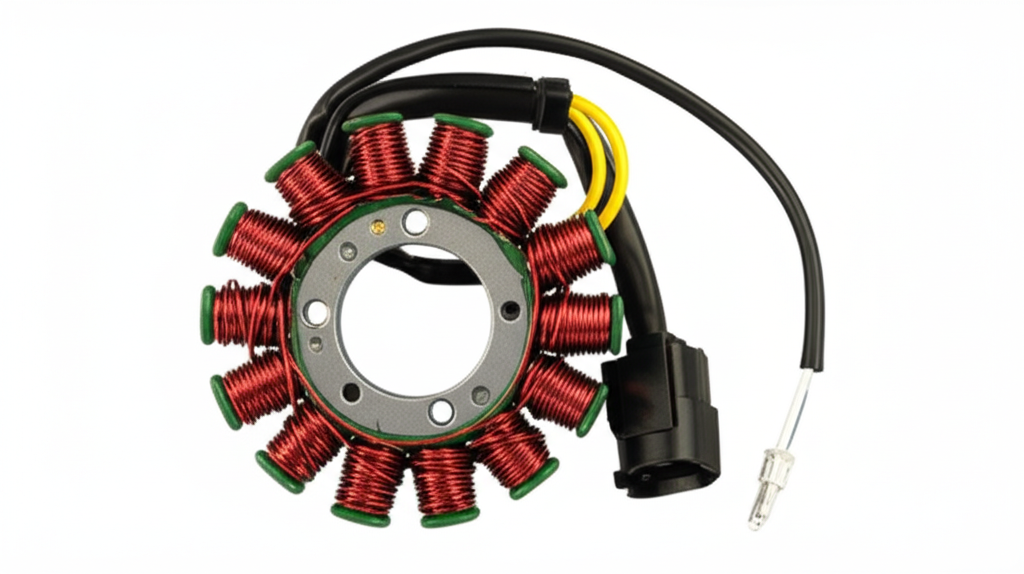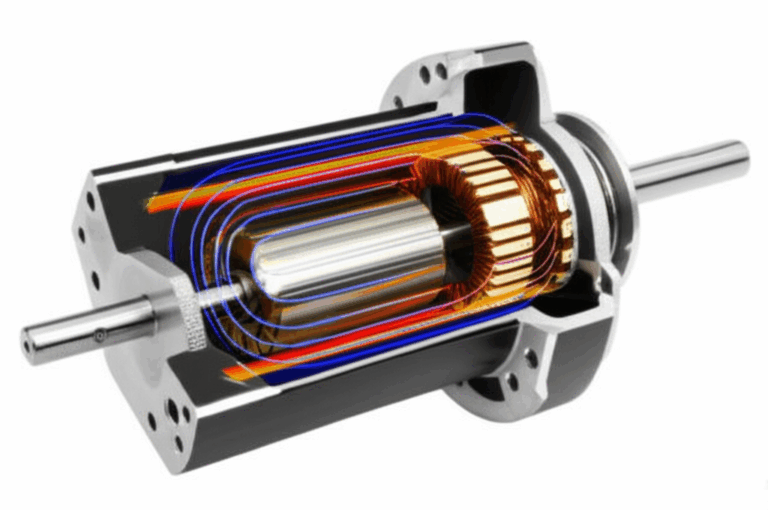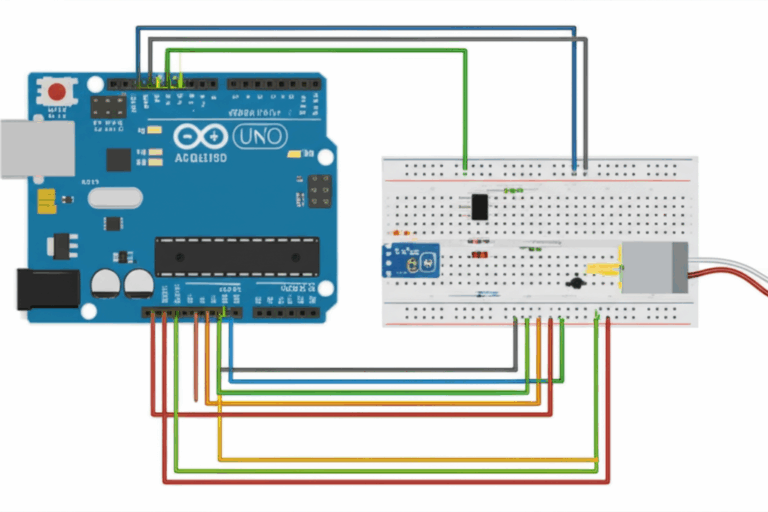
What Does a Stator Do on a Dirt Bike? Understanding Its Vital Role in Power & Performance
Table of Contents
- Introduction
- What Is a Stator on a Dirt Bike?
- How Does a Stator Make Power?
- What Does the Stator Power on Your Bike?
- How Do AC and DC Work on a Dirt Bike?
- How Do You Spot a Bad Stator?
- How Do You Test a Stator with a Multimeter?
- Stator vs Alternator vs Magneto: What’s the Difference?
- Care, Maintenance, and Upgrades
- Real-World Brands and Models: What Riders See
- Power Output, Loads, and Keeping the Battery Charged
- Quick Data and Costs
- FAQs
- References
- Key Takeaways
A stator is the little powerhouse in your dirt bike. It makes the electricity that your engine and lights need. I will show you what it does, how it works, how to test it, and how to fix problems fast. You will ride with more confidence because you will understand your dirt bike electrical system.
Introduction
Problem: your bike cranks slow, the lights dim, or there is no spark. You feel stuck. You wonder why your dirt bike is not charging. You may think the battery failed. Often the real problem sits under the stator cover.
I have been there on a trail when my Honda stalled and would not start. The engine would turn. The spark plug stayed silent. That day taught me a lot about the motorcycle stator function.
Solution: learn the core of the system. The stator coil purpose is simple. It makes power. It feeds the CDI unit and coil so the spark plug fires. It charges the battery. It runs the headlight and other parts. When you understand this part, you can handle common dirt bike electrical failures with calm steps.
What Is a Stator on a Dirt Bike?
A stator is a set of copper windings wrapped around an iron core. It bolts to the engine case. Around it spins the flywheel, which holds permanent magnets. Together, they make the bike’s alternator. Many riders call this a magneto.
It sits inside the stator cover. A stator cover gasket seals oil and keeps dirt out. Some bikes run oil in the stator cover. Oil helps cool the stator. I know that sounds odd. It works well when the design handles heat in a smart way.
You will see different types. Some bikes use a single phase stator. Others use a three phase stator. Both make AC power. Both run by the same law of electromagnetic induction.
How Does a Stator Make Power?
Your engine turns the crankshaft. The flywheel bolts to the crank. As the engine spins, the flywheel rotates around the stator. This is engine rotation and stator working together.
The magnets pass close to the copper windings. This magnetic field generation pushes electrons in the wire. That is electromagnetic induction motorcycle style. The result is AC current production. We call that stator output voltage. The faster the engine spins, the higher the engine RPM and stator output.
Most stock dirt bikes do not use huge kilowatt (kW) power levels. Still, voltage and current matter. We measure Volt (V) and Ampere (A). We keep an eye on voltage regulation to protect the battery and lights.
For best results, the metal stack inside the stator must guide the magnetic flow. Quality steel and tight stacking help cut loss and heat. Makers use thin sheets called laminations. If you build or upgrade, study the role of precise stator core lamination. It shapes flux and reduces eddy currents.
What Does the Stator Power on Your Bike?
The stator feeds three key jobs in the charging system dirt bike setup.
- Charging the battery
- Powering the ignition
- Running lights and add-ons
First, the stator charges the battery through a rectifier regulator. This block turns AC to DC. It keeps voltage stable. A healthy system prevents battery discharge problems. It answers the big question: how to keep battery charged dirt bike use demands. A weak battery leads to hard starts and dim lights.
Second, the stator powers the ignition. The CDI (Capacitor Discharge Ignition) stores energy. The ignition coil boosts it. Then the spark plug firing ignites fuel. If the stator fails, you get no spark dirt bike or weak spark diagnosis leads back to low voltage from the stator.
Third, the stator runs the lighting system and other dirt bike components. That includes headlight power dirt bike and taillight power dirt bike. On some EFI bikes you also power a fuel pump. Some models drive a cooling fan or dashboard/gauges. You may add power accessories dirt bike riders like, such as GPS or heated grips. Keep loads in check.
How Do AC and DC Work on a Dirt Bike?
AC comes from the stator. Many bikes use DC to charge the battery and to power key parts. The rectifier regulator purpose is to convert AC power generation dirt bike output into DC power conversion. It also limits voltage so you do not overcharge the battery or blow bulbs.
Some bikes split the system. They run lights on AC and charge the battery with DC. Others convert all to DC. The wiring depends on the model. A good dirt bike wiring diagram shows how wires connect to the wiring harness and fuse. Keep your engine ground wire clean and tight. Bad grounds cause trouble.
If you design, build, or upgrade, the stator and rotor work as a pair. The rotor holds magnets. Its core also uses lamination stacks. Good matches between stator and rotor core lamination help efficiency and heat control.
How Do You Spot a Bad Stator?
Let’s use PAS again.
Problem: the bike acts up.
- Battery not charging / dead battery after a ride.
- Lights dim dirt bike rides at idle or low RPMs.
- Engine won’t start electrical even with fresh fuel.
- Weak or no spark leads to misfires or stalling.
- Burnt smell or dark burnt stator windings on a visual check.
Agitate: keep riding like this and you risk getting stuck at night. You stress the rectifier/regulator. You damage the battery. You may see connector corrosion electrical and wiring harness damage.
Solution: check for stator symptoms bad and act. A quick test with a meter takes minutes. Replace a failed part before it hurts more parts.
Common causes include:
- Stator overheating causes like heavy loads or poor airflow
- Heat stress stator from tight engine bays
- Vibration damage stator from rough riding
- Stator insulation failure due to age
- Oil in stator cover that is dirty or old
- A failed regulator that overcharges the stator
How Do You Test a Stator with a Multimeter?
You can do a multimeter stator test at home. I keep a small meter in my tool bag.
- First, do a resistance test stator. Unplug the stator. Check each pair of wires. Compare values to the stator resistance specifications in your manual.
- Then do a voltage test stator. With the bike running, measure AC volts across leads. Rev the engine. Do readings rise with RPM
- Add an open circuit stator test and a short circuit stator test. Check for a ground fault stator by testing each lead to engine ground.
Use the service manual for your model. It lists correct values. Keep the meter on the right range. Never short wires with probes. Safety first.
If you need to pull the rotor, use a flywheel puller tool. Do not pry with a screwdriver. You will mar parts. Protect the stator cover gasket. Replace it if torn.
Stator vs Alternator vs Magneto: What’s the Difference?
On cars, an alternator is a big part with a belt. On many bikes, the “alternator” lives inside the engine as a stator and flywheel. Riders call it a magneto on a dirt bike. In simple words, a stator is the stationary part. The flywheel with magnets is the moving part. Together, they do the job of a compact alternator.
So, stator vs magneto dirt bike talk can be confusing. On most dirt bikes they refer to the same set of parts. The main idea stays the same. Use motion to make electricity. Then feed the bike with it.
If you build motors for e-bikes or BLDC tools you may study motor core laminations and electrical steel laminations too. The materials overlap with what makes a strong motorcycle stator core.
Care, Maintenance, and Upgrades
Care beats repair. Here is proactive stator maintenance that helps dirt bike reliability electrical riders want.
- Keep connectors dry and clean. Stop connector corrosion electrical.
- Check the wiring harness for rub marks or wiring harness damage.
- Tie down loose wires to reduce vibration.
- Clean and tighten the engine ground wire.
- Do regular diagnostics electrical system checks with a meter.
Avoid too many add-ons. Limit total electrical load dirt bike riders place on the system. If you add heated gear and big lights, you may need a high output stator upgrade. This can boost stator output wattage on enduro and adventure bike stator setups.
When you do a DIY stator replacement, inspect the cover, gasket, flywheel key, and connectors. Some riders try rewinding stator coil at home. It can work when you have the right wire and epoxy. I prefer new windings from a trusted shop for long rides.
If you build from scratch or supply parts to shops, the iron stack matters. Tight, clean core lamination stacks reduce loss and heat. Good stacking helps voltage regulation dirt bike systems run cool. Materials and cuts matter. So does the fit between stator and rotor.
Real-World Brands and Models: What Riders See
You will hear model names. Here is what I see in the field.
- Honda CRF stator issues often show up as hard starts or dim lights. Check the regulator first then the stator.
- Yamaha YZ stator setups feed strong ignition on two-strokes. A weak spark often points to a failed magnetic pickup coil or pulse generator dirt bike.
- Kawasaki KX stator problems feel like a mid-range miss. Heat and vibes matter on race bikes.
- Suzuki RM stator and KTM stator problems show up with no spark after a wash when connectors get wet. Dry and test.
Two-stroke and four-stroke bikes can use different windings and pickups. A two-stroke stator may focus on ignition with small lighting coils. A four-stroke stator on an EFI bike may need more watts for pump and fan. For off-road bike electrical reliability, keep water out and grounds clean.
Power Output, Loads, and Keeping the Battery Charged
Not all stators make the same juice. Typical power output range varies:
- Small trail bikes: 30–60W
- Mid-range/enduro: 80–150W
- Big enduro/adventure: 150–300W+
Ask your manual for exact stator output wattage. Add up your loads. Headlight, tail, brake, fan, fuel pump, and any add-on gear. A parasitic drain dirt bike problem will kill a battery parked in the garage. Pull fuses to test draw.
Now the big question many ask: why is my dirt bike not charging. It can be a bad battery. It can be a bad rectifier/regulator. It can be the stator. A good test plan finds the truth.
Be sure the kill switch function electrical works. Faulty switches can stop spark. A spark arrestor keeps trails safe and clean. It sits in the exhaust. It does not run on wires. Still, a clogged arrestor can make you think the ignition failed. Always check both fuel and spark.
Quick Data and Costs
Here is a simple table you can use when you plan repairs.
| Data Point | What It Means | Typical Value or Note |
|---|---|---|
| Primary Function | Converts engine motion to electrical power | AC power feeds ignition, battery, lights |
| Typical Lifespan | How long it may last | 5–10+ years with care; heat and vibes shorten life |
| Common Causes of Failure | What breaks it | Overheating, vibration, age, oil issues, bad regulator |
| Diagnostic Time | Time to test | 30–60 minutes with a multimeter |
| Replacement Cost (Part) | Price of stator | Aftermarket $50–$150; OEM $150–$400+ |
| Replacement Cost (Labor) | Shop time | 1–3 hours at local shop rates |
| Output Range | Stock watts | 30–300W+ by model |
| Impact of Failure | What happens | Bike dies, no spark, dim lights, dead battery |
If you fabricate or source parts, learn how lamination quality drives performance. Study silicon steel, coating, and stacking. Precision sheet steel helps the stator run cool. If you want to dig deeper into laminations and materials for motor and transformer cores, explore electrical steel laminations.
FAQs
Q1: Can a dirt bike run with a bad stator?
A: Sometimes for a short time. If the ignition still gets some power the bike may run poorly. It will stall soon. Fix it before you get stuck.
Q2: How long do stators last?
A: Many last years when cooled and clean. Heat and harsh rides shorten life. Keep loads low and connectors clean.
Q3: Is replace dirt bike stator hard?
A: With a manual and patience you can do it. You may need a flywheel puller tool. Protect the gasket. Follow torque specs.
Q4: What causes a stator to go bad?
A: Heat, vibration, oil issues, age, and a failed regulator. Wiring rubs and bad grounds also hurt.
Q5: What is the CDI unit function?
A: It stores energy and releases it so the ignition coil power can fire the spark plug at the right time.
Q6: What about stator and engine timing?
A: A magnetic pickup coil or pulse generator tells the CDI when to fire. Use a timing light dirt bike tool if the manual calls for it.
Q7: What is the difference between single phase stator and three phase stator?
A: Three-phase makes smoother power and more output at low RPM. Many EFI and adventure bikes use it.
Q8: Does oil in stator cover mean a leak?
A: Some bikes run oil there by design. Check the manual. If not by design then replace the stator cover gasket.
Q9: What powers the spark on a dirt bike?
A: The stator powers the CDI and coil. Good ground and clean connections help.
Q10: Where can I learn more about the parts inside?
A: A good dirt bike parts glossary in your manual helps. Wiring diagrams also help you understand dirt bike mechanics.
References
- OEM Service Manuals: Honda, Yamaha, KTM, Kawasaki, Suzuki, Husqvarna, GasGas
- Clymer and Haynes motorcycle electrical guides
- Manufacturer wiring diagrams and specifications for resistance and voltage tests
- Shop experience and rider reports for typical costs and diagnostic steps
Positioning a Practical Solution
Problem: you need reliable power for riding, racing, or long trips. Agitate: cheap cores and poor steel waste energy and build heat. That shortens stator life. It can cause misfires and dim lights. Solution: when you repair, upgrade, or build, pick well-made cores and laminations. That is how you get stable voltage and long life. If you source parts for shops or build custom systems, learn from suppliers that specialize in precision stacks and steel. Materials and laminations matter.
For deeper insight into precision stacks and materials you can review:
- High-precision stator core lamination for efficient flux paths
- Matching rotor core lamination to complete the magnetic circuit
- Broad coverage of motor core laminations across applications
- Advanced electrical steel laminations to reduce loss and heat
These resources help engineers, builders, and shops make smarter choices for reliable power.
Key Takeaways
- The stator is the heart of your dirt bike electrical system. It makes AC power with magnets and coils.
- A healthy stator charges the battery, powers the ignition system, and runs lights and accessories.
- Bad stator signs include weak or no spark, dim lights, and a dead battery.
- Test with a meter. Do resistance, voltage, open, short, and ground checks. Follow specs in the manual.
- Keep loads in check. Clean grounds and connectors. Use the right tools like a flywheel puller.
- For upgrades, consider a high output stator on enduro or adventure bikes.
- Quality cores and laminations improve efficiency and reduce heat. That means longer life and better rides.








